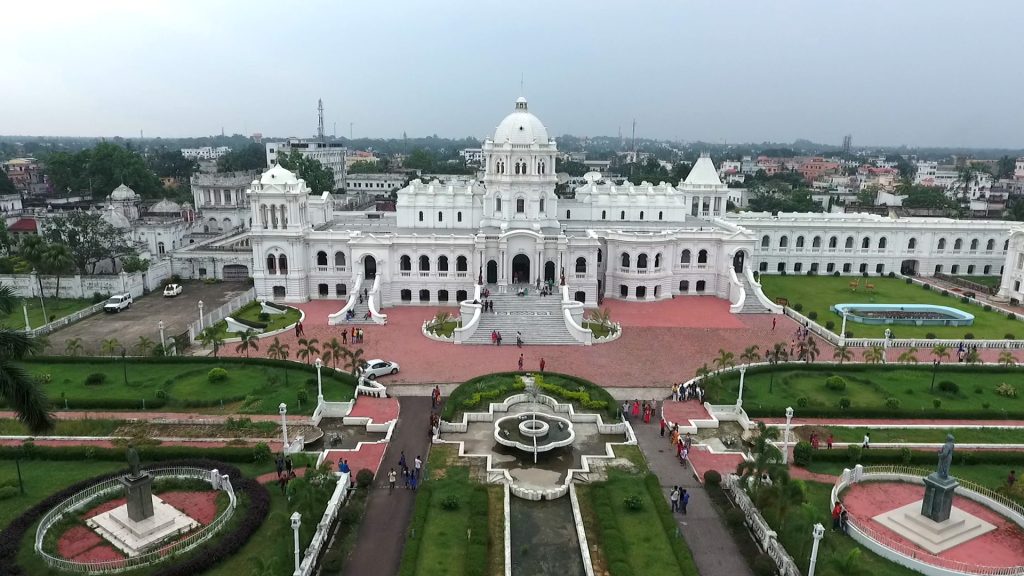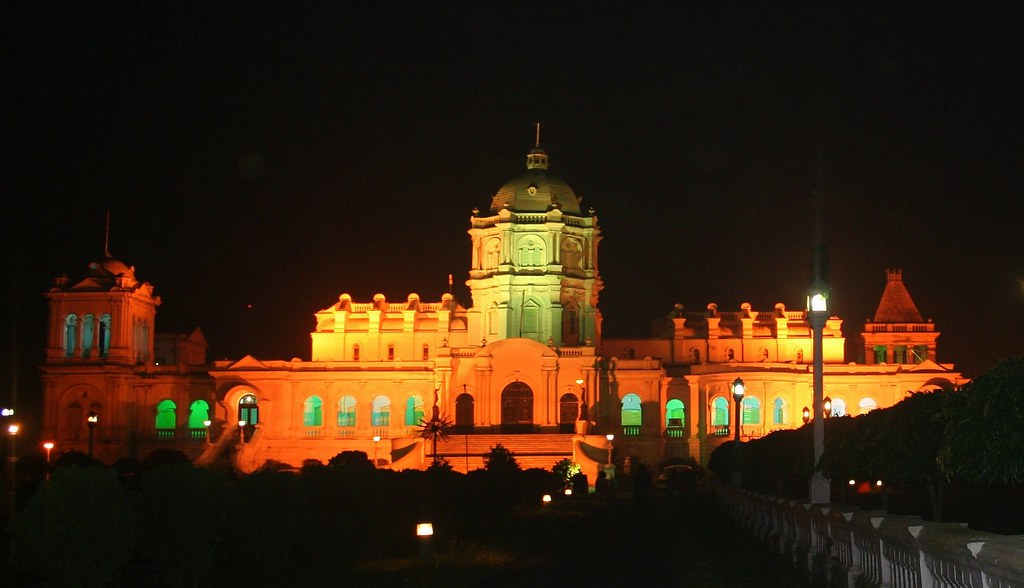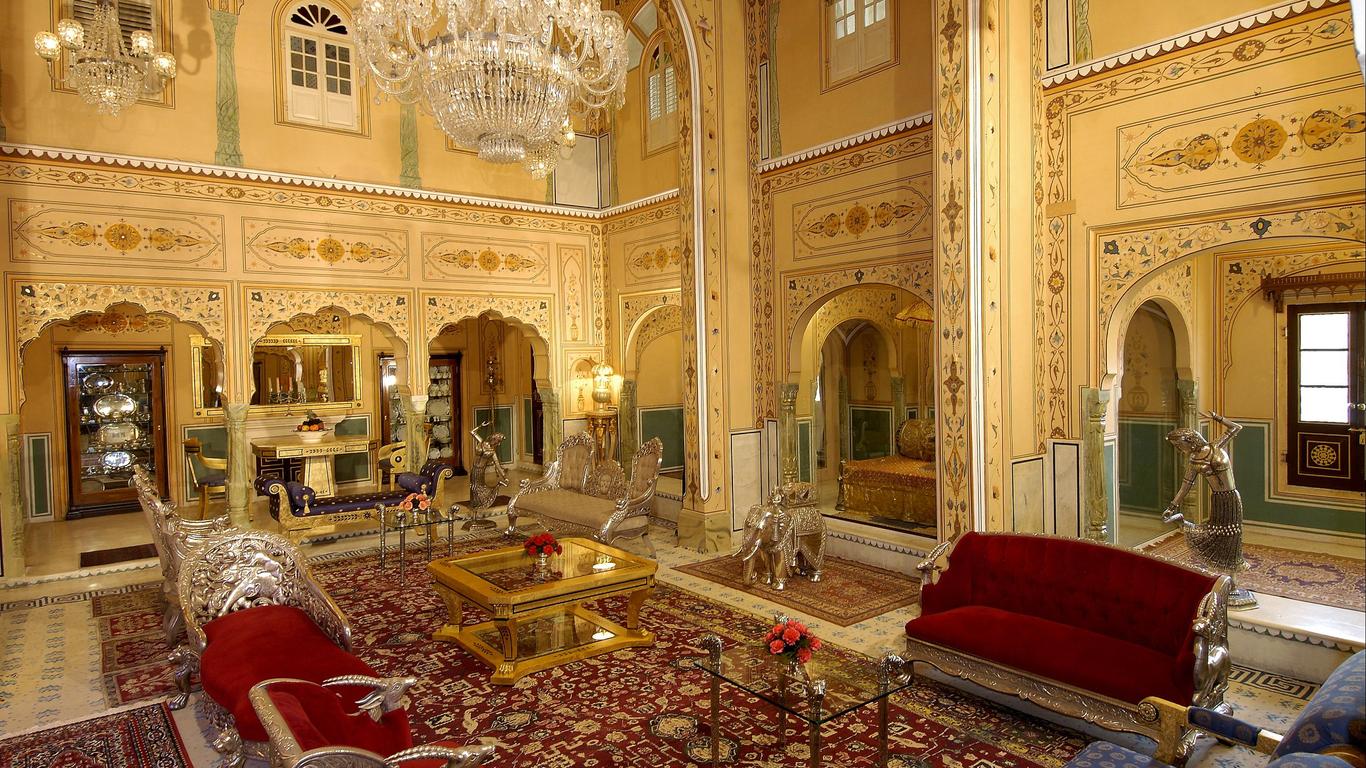The Ujjayanta Palace is a museum and former royal palace of Tripura (princely state) situated in Agartala, the capital of the Indian state of Tripura. The palace was constructed between 1899 and 1901 by the Tripura king, Maharaja Radha Kishore Manikya, and stands on the banks of a small lake surrounded by Mughal gardens. It was the home of the ruling Manikya dynasty until the Tripura`s accession to India in October 1949. The palace was purchased from the royal family by the Tripura government in 1972-73 for Rs. 2.5 million, and was used to house the state legislative assembly until July 2011. Ujjayanta Palace is now a state museum and it showcases the lifestyle, arts, culture, tradition and utility crafts of communities residing in northeast India. The name ‘Ujjayanta Palace’ was given by Rabindranath Tagore, the first Asian Nobel Prize winner. Tripura claims to be one of the oldest princely states of ancient India. The royal line of Tripura began during the reign of Maharaja Maha Manikya, who was crowned in 1400 AD, and was the first ruler under the royal title of Manikya. Ujjayanta Palace was built in 1862, 10 km (6 mi) away from Agartala, by King Ishan Chandra Manikya (1849-1862). It was devastated by the Assam earthquake of 12 June 1897. The palace was rebuilt in the heart of Agartala city by Maharaja Radha Kishore Manikya in 1899–1901, at a cost of 10 lakh (1 million) rupees. It was built by Martin Burn Company, and served as the model of the Maharajah’s palace in Tintin and the Cigars of the Pharaoh. Upon the merger of the Kingdom of Tripura with India in 1949, royal properties were nationalised. The main building along with the area around the palace was purchased from the royal family by the Tripura government in 1972-73. It housed the Tripura Legislative Assembly until July 2011 when the assembly moved to a new location 6 km (3.7 mi) north of Agartala. As state museum: In 2013, the Ujjayanta Palace became home to the Tripura Government Museum, the biggest museum in the region, which was established in 1970. The museum contains 22 galleries and showcases northeast India’s art, culture, history, tradition and ethnic diversity. The items on display include sculptures, terracotta figurines, coins, copper and stone inscriptions, bronze images, textiles, oil paintings, sketches and drawings, tribal ornaments, and musical instruments. In addition, the state archive has been moved to Ujjayanta Palace. The museum was provided with seismic retrofitting to prevent it from possible earthquake damage, at a cost of Rs. 100 million, and the museum was inaugurated by the Vice President of India Mohammad Hamid Ansari on 25 September 2013. Early in the museum’s history, controversy erupted over the state government’s proposed move to change the name of Ujjayanta Palace to Tripura State Museum. The Indigenous Nationalist Party of Twipra (INPT) has written to Vice President, Hamid Ansari, protesting that the name of the museum should reflect the history and heritage of the region. Pradyut Bikram Kishore Debbarma, the titular king of Tripura said, “The palace is a historical spot. It doesn’t belong to the members of erstwhile royal family alone, neither does it solely belongs to the government. It belongs to Tripura and somebody in the government can’t suddenly impose a decision to change its name”. After a candle-light rally attended by about 8000 people, the government decided to keep the original name of Ujjayanta Palace and to build a statue of Maharaj Radha Kishore Manikya on the museum premises. The Ujjayanta Palace compound covers an area of approximately 1 km2 (250 acres) and includes public rooms such as the throne room, durbar hall, library and reception hall. The buildings and grounds cover 800 acres (3.2 km2) in the heart of Agartala. The neoclassical palace was designed by Sir Alexander Martin of Martin Burn Company. The Chinese Room is particularly notable, the ceiling of which was crafted by artisans brought from China. The two-storied palace has three large domes, the largest of which is 86 ft (26 m) high, and which rests atop a four-storied central tower. The architecture shows a mix of influences: Mughal, Roman and British The palace has tiled floors and carved front doors. A newer attraction is the musical fountain installed in front of the main entrance. The grounds are laid out as formal Mughal gardens adorned with fountains. There are two large artificial ponds on either side of the garden which is decorated with pools and fountains. Several Hindu temples occupy plots adjacent to Ujjayanta Palace, dedicated to Lakshmi Narayan, Uma-Maheshwari, Kali and Jagannath.
Gallery



